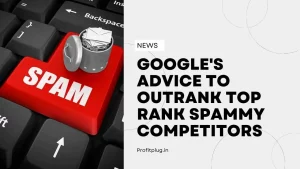
Every website needs to identify its niche, set out its priorities straight, and create a plan to cater to the target audience. However, that is not always the case. You will see for yourself that websites that have a clear blog plan for themselves become more successful.
Content Marketing is the biggest priority for all companies right now. It is the fastest way to get in touch with people and help in both pull and push marketing strategies. B2B conversion is possible with content marketing.
Let us now understand what we need to create the perfect content plan for your website. Here is a step-by-step guide –
1. Mission and Goals
One of the most crucial steps to formulating your strategy is to figure out your audience. Every niche has its charm and a target audience. When we talk about having a target audience, we identify the people with whom you want to connect the most.
If you sell something that suits middle-aged men and women, you need to talk or converse with them differently. On the other hand, talking to youngsters would be a different ball-game altogether.
You need to provide a benefit for your target audience to lure them into coming read your blogs. Solving their problem will raise your chances of converting leads into actual sales.
Setting goals for yourself is important; however, make sure to keep shorter and realistic goals ahead of you. The goals you set for yourself should be attainable.
2. Key Performance Indicators
You need to identify your KPIs by making your goals measured and specific. By setting these indicators, you can control your website much better. Moreover, you will understand what is working out for you and what is not.
Set yourself a target revenue, let’s say for a month or quarterly or a year. Make people sign up into your website so that you can keep pushing your content to them over Email marketing (for instance).
Email subscribers are an important consideration. Always check site traffic and see how people are engaging with your on-site content. Bring more people to your website through the more successful pages.
Amidst all of this, keep track of your spendings on marketing and campaigns.
3. Read your Audience
Your priority should be your target audience, and nothing is more important in the B2B marketing strategy. Creating the content that will be tailor-fit for your potential client pool is the ideal way to begin. But for that, you need to collect more information on that.
Learn about your audience and segregate or classify them based on their age, educational qualification, income levels, and gender. Moreover, geographical locations can also play a significant factor.
Everything can be brought down to statistics. Analytics of your web content, email marketing, and subscribers can help you understand where you are and where you can be. Acquiring feedback is essential to run any successful business, and your website is no exception.
4. Success Points
Once you figure out where you are getting the maximum traffic from, it’s better to hammer there. Do not try to do everything at once. Keep evolving and making things better where you are already gaining the maximum traction.
3. Types of Content
Every niche will have its unique features and approach. For example, if you wish to show someone “how to fix a wheel,” you probably need to show it by way of a video. Videos and blogs are two separate propositions and require different skillsets. If you happen to know how to do both works for your type of content, then it’s very well.
However, the type of content that you may need to produce may differ from what you are producing now. Everything depends on what information you are trying to send out.
Therefore, you can create infographics, videos, and graphic posters to reach more people also you should know How to write a Perfect Blog.
a. Allocation of resources –
Once you identify the type of content which goes with your brand and nice, start allocating your revenue towards those ends. Within weeks and months, you will see exponential growth in your traffic.
b. Content calendars –
Accountability is one of the crucial aspects of the planning and execution of marketing strategy. Create a content calendar and fix dates within which a particular group of content needs to be prepared and uploaded. Set small targets for yourself and your team to get things done.
c. Content distribution –
Once you are done making your content, you need to send them out. But how, where, and to whom?
Plan your daily uploads and stick to your routine. Touch all the necessary bases like Email marketing and daily uploads on social media. Do not put too many pictures in your Emails as it will take you directly to spam. Moreover, beware of what you write in your E-Mails while marketing.








